[0] 참고자료
- PyTorch로 시작하는 딥 러닝 입문 유원준 외 1명
- 딥러닝 파이토치 교과서 서지영
[1] 환경 설정(windows)
[2] 기초
1. 데이터 타입

- 단위 값은 스칼라 Scalar
- 1차원 배열은 벡터 Vector
- 2차원은 행렬 Matrix
- 3차원 텐서 Tensor
- 상황에 따라 모두가 텐서가 될 수 있음. 1차원 텐서, 2차원 텐서 …
2. 텐서 표기
2.1 2D Tensor |t| = (Batch size, dimension) 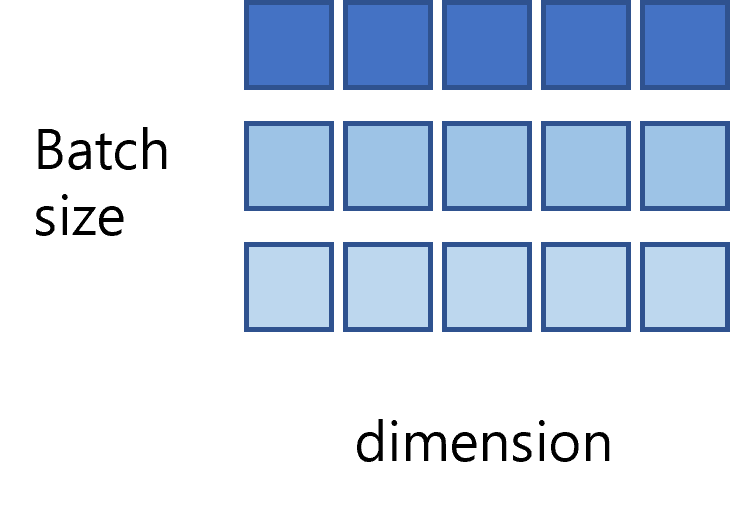
- 3행 5열 = 3x5
- Batch size = 3, dimension = 5
-> 하나의 데이터는 5개의 데이터로 구성되었으며, 한 번에 처리하는 훈련 데이터는 3개이다.
2.2 3D Tensor
|t| = (Batch size, width, height)
- 하나의 데이터는 width * height로 구성되었으며, 한 번에 처리하는 훈련 데이터는 Batch size만큼이다.
3. 머신러닝 용어
1) 데이터 셋
- 데이터셋
- 일반적으로 Training, Validation, Testing 세 개의 용도로 분리함
- Validation 데이터는 모덱의 성능을 조정하기 위한 것
- 학습이 종료되면, Validation 데이터에 대해서도 일정부분 최적화가 되었으므로, 성능 테스트에 적합하지 않음
- Training-문제지, Validation-모의고사, Testing-실전시험, 이후 real data 사용
- 하이퍼파라미터
- 모델의 성능에 영향을 주는 매개변수
- 모델의 성능을 조정하기 위한 용도
- 사용자가 직접 정해줄 수 있는 변수
- ex) learning rate
- 파라미터
- 학습을 통해 바뀌어져가는 변수
2) Classification & Regression
머신러닝의 많은 문제가 여기에 속함
- 이진 분류 문제 (Binary Classification)
- 주어진 입력에 대해 둘 중 하나의 답을 정하는 문제
- ex) Pass of Fail, 스팸여부
- 다중 클래스 분류 (Multi-class Classification)
- 여러 개의 선택지 중 하나의 답을 정하는 문제
- ex) 꽃 품종 분류, 이물질 종류 분류
- 회귀 문제 (Regression)
- 연속된 값을 결과로 가짐
- ex) 5시간 공부했을 때 80점, 5시간 1분 공부했을 때 80.5점, 7시간 공부했을 때 90점. 그러면 n시간 공부했을 때 점수는?
3) Supervised Learning & Unsupervised Learning
- 지도 학습
- Label이라는 정답과 함께 학습ㅎ는 것
- 비지도 학습
- 군집, 차원 축소와 같이 목적 데이터/레이블 없이 학습 하는 방법
- 강화 학습
- 어떤 환경에서 현재의 상태를 인식하여, 선택 가능한 행동들 중 보상을 최대화 하는 행동 또는 순서를 선택하는 방법
4. Sample & Feature
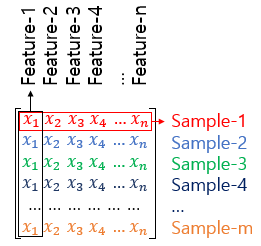
- Sample : 하나의 데이터
- Feature : y를 예측하기 위한 독립 변수 x
5. Confusion Matrix
- 정확도 Accuracy
- 맞춘 문제 수 / 전체 문제 수
- Confusion Matrix
| - | 참 | 거짓 |
|---|---|---|
| 참 | TP | FN |
| 거짓 | FP | TN |
1
2
3
4
- True Positive : Positive라 답하고 정답
- False Positive : Positive라 답하고 오답
- False Negative : Negative라 답하고 오답
- True Negative : Negative라 답하고 정답
- 정밀도 Precision
- 양성이라 답한 케이스에 대한 TP 비율
- precision = TP / (TP + FP)
- 재현률 Recall
- 양성인 데이터를 실제로 얼마나 양성인지 예측, 즉 재현했는지 비율
- Recall = TP / (TP + FN)
- F1-Score
- 정밀도와 재현률은 Trade-off 관계이므로, 적절한 지점을 찾기 위해 조화 평균을 사용함
- 2 * (Precision * Recall / (Precision + Recall))
- TP / (2TP + FN + FP)
6. Overfitting & Underfitting
- 과적합 Overfitting
- 훈련 데이터를 과하게 학습하여, 훈련데이터에만 적합해진 경우
- 과소적합 Underfitting
- 훈련을 덜 한 상태
[3] 선형 회귀 Linear Regression
선형 회귀

-> x와 y의 선형 관례를 모델링하는 회귀분석 기법
1. Hypothesis
- y = Wx + b
H(x) = Wx + b
2. Cost Function
비용 함수(cost function) = 손실 함수(loss function) = 오차 함수(error function) = 목적 함수(objective function)

- 예측 결과와 실제 결과의 차이를 구하는 함수
- 비용 함수가 최소값이 되게 하는 W와 b를 구하는 것이 목표
3. Gradient Descent
- Cost Function의 값을 최소로 하는 W와 b를 찾을 때 사용하는 것이 Optimizer 알고리즘
- Optimizer 알고리즘을 사용해서 W와 b를 찾는 과정을 training
- Gradient Descent는 기본적인 Optimizer 알고리즘
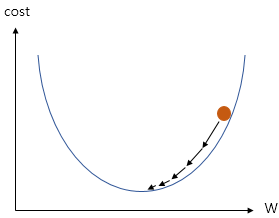
- 앞서 Cost Function은 W의 값이 너무 커지거나 너무 작아지면 그 결과값이 커진다. (2차원 방정식)
- 따라서 경사하강법은 cost function의 기울기가 0에 가까운 상태를 찾는다.
2. 구현
1
2
3
4
5
6
7
8
9
10
11
12
13
14
15
16
17
18
19
20
21
22
23
24
25
26
27
28
29
30
31
32
33
34
35
36
37
import torch
import torch.nn as nn
import torch.nn.functional as F
import torch.optim as optim
# 난수 발생 순서와 값을 동일하게 보장해 준다
torch.manual_seed(1)
x_train = torch.FloatTensor([[1], [2], [3]])
y_train = torch.FloatTensor([[2], [4], [6]])
W = torch.zeros(1, requires_grad=True) # size 1,1 인 Tensor 생성
b = torch.zeros(1, requires_grad=True) # requires_grad=True 학습을 통해 변경되는 변수임
optimizer = optim.SGD([W, b], lr=0.01)
nb_epochs = 2000
for epoch in range(nb_epochs + 1):
# H(x) 계산
hypothesis = W * x_train + b
# cost 계산. MSE - Mean Sqaure Error
cost = torch.mean((hypothesis - y_train) ** 2)
# cost 계산
# gradient를 0으로 초기화
optimizer.zero_grad()
# 비용 함수를 미분하여 gradient 계산
cost.backward()
# W와 b를 업데이트
optimizer.step()
# 100번마다 로그 출력
if epoch % 100 == 0:
print('Epoch {:4d}/{} W: {:.3f}, b: {:.3f} Cost: {:.6f}'.format(epoch, nb_epochs, W.item(), b.item(), cost.item()))
다중 선형 회귀
1
2
3
4
5
6
7
8
9
10
11
12
13
14
15
16
17
18
19
20
21
22
23
24
25
26
27
28
29
30
31
32
33
34
35
36
37
38
import torch
import torch.nn as nn
import torch.nn.functional as F
import torch.optim as optim
torch.manual_seed(1)
x_train = torch.FloatTensor([[73, 80, 75],
[93, 88, 93],
[89, 91, 90],
[96, 98, 100],
[73, 66, 70]])
y_train = torch.FloatTensor([[152], [185], [180], [196], [142]])
model = nn.Linear(3,1)
print(list(model.parameters()))
optimizer = optim.SGD(model.parameters(), lr=1e-5)
nb_epochs = 2000
for epoch in range(nb_epochs + 1):
prediction = model(x_train)
cost = F.mse_loss(prediction, y_train)
optimizer.zero_grad()
cost.backward()
optimizer.step()
if epoch % 100 == 0:
print('Epoch {:4d}/{} Cost: {:.6f}'.format(
epoch, nb_epochs, cost.item()
))
new_var = torch.FloatTensor([[73, 80, 75]])
pred_y = model(new_var)
print('result : ', pred_y)
[4] 로지스틱 회귀 Logistic Regression
로지스틱 회귀
- 둘 중 하나를 결정하는 이진 분류(Binary Classification)을 풀기 위한 대표적인 알고리즘
- 회귀이지만 분류 작업에 사용함
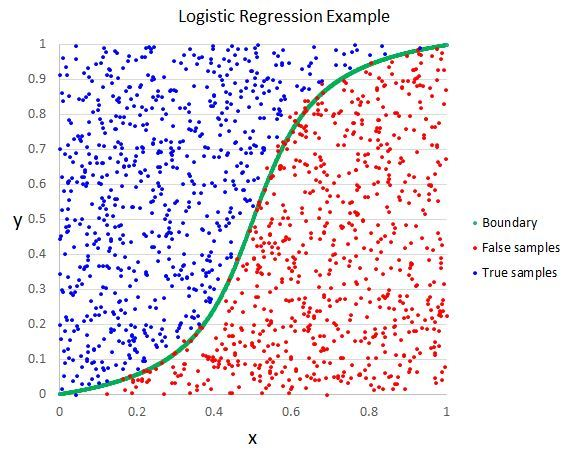
- S자 그래프가 그려지므로 새로운 가설이 필요 -> Sigmoid function
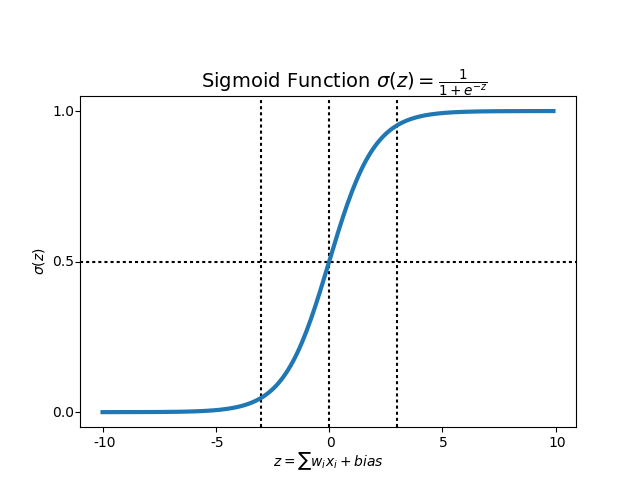
- W의 값이 커지면 경사도가 커지고
- bias의 값에 따라 그래프가 좌, 우 이동함
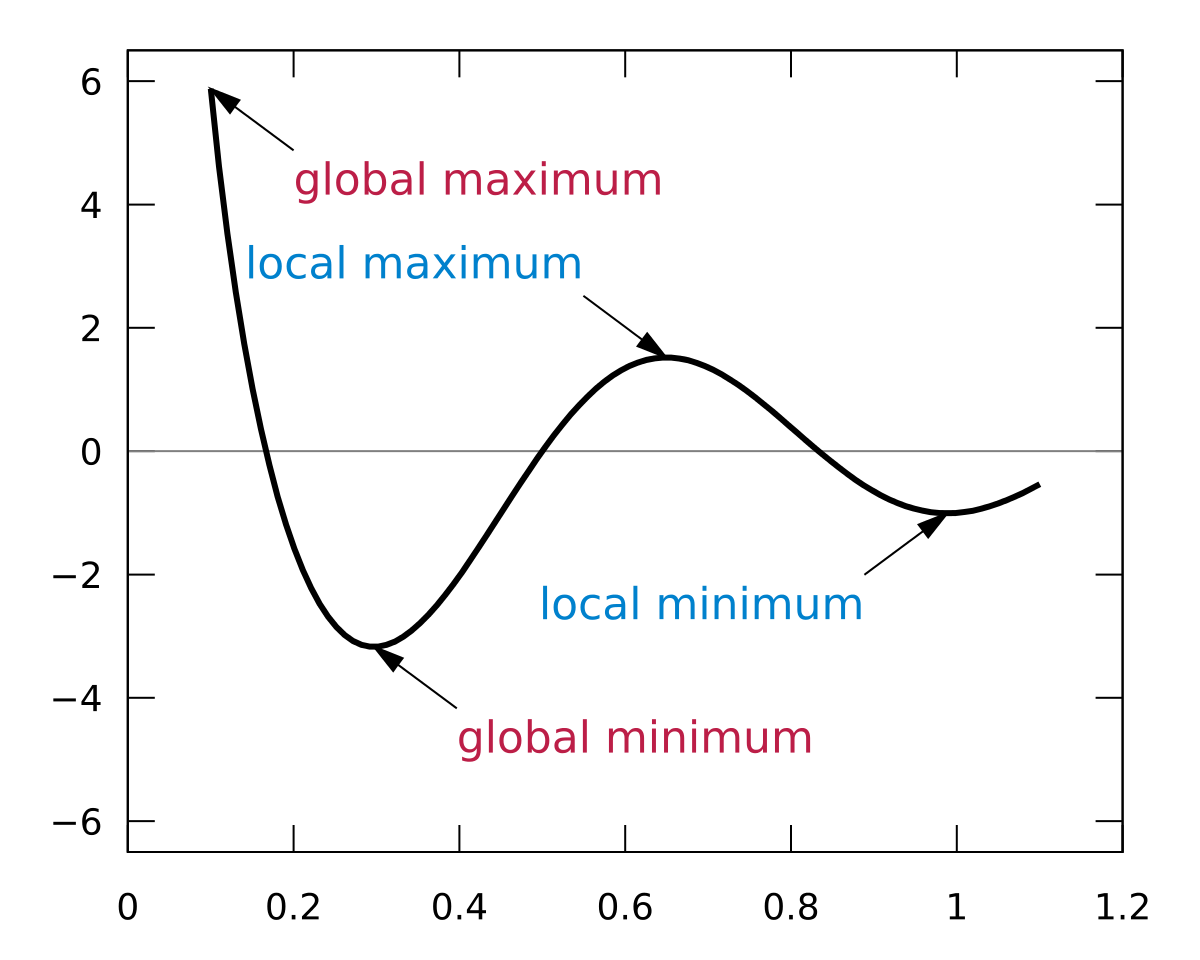
구현
1
2
3
4
5
6
7
8
9
10
11
12
13
14
15
16
17
18
19
20
21
22
23
24
25
26
27
28
29
30
31
32
33
34
35
36
37
38
import torch
import torch.nn as nn
import torch.nn.functional as F
import torch.optim as optim
torch.manual_seed(1)
x_data = [[1, 2], [2, 3], [3, 1], [4, 3], [5, 3], [6, 2]]
y_data = [[0], [0], [0], [1], [1], [1]]
x_train = torch.FloatTensor(x_data)
y_train = torch.FloatTensor(y_data)
model = nn.Sequential(
nn.Linear(2, 1),
nn.Sigmoid()
)
optimizer = optim.SGD(model.parameters(), lr=1)
nb_epochs = 1000
for epoch in range(nb_epochs + 1):
hypothesis = model(x_train)
cost = F.binary_cross_entropy(hypothesis, y_train)
optimizer.zero_grad()
cost.backward()
optimizer.step()
if epoch % 20 == 0:
prediction = hypothesis >= torch.FloatTensor([0.5])
correct_prediction = prediction.float() == y_train
accuracy = correct_prediction.sum().item() / len(correct_prediction)
print('Epoch {:4d}/{} Cost: {:.6f} Accuracy {:2.2f}%'.format(epoch, nb_epochs, cost.item(), accuracy * 100))
print(list(model.parameters()))
